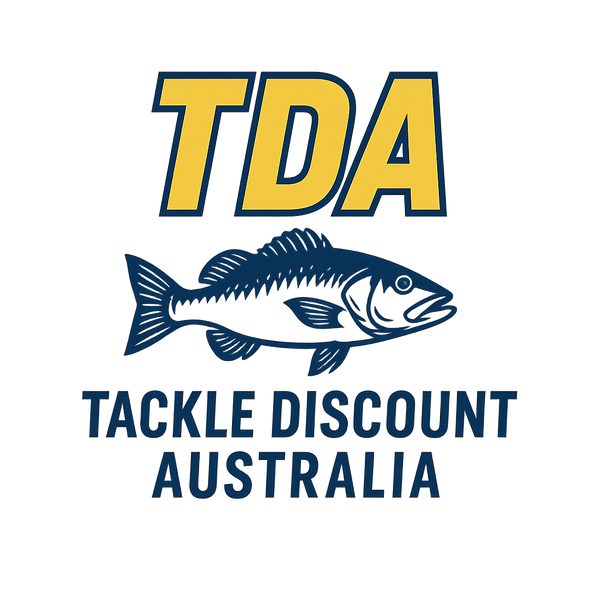
Beginner’s Guide to Saltwater Jigging in Australia | Tackle Tips
Share
The Beginner’s Guide to Saltwater Jigging: From Your First Drop to Your First Fish
Jigging might look intimidating at first. You see anglers dropping heavy metal lures into deep water, cranking furiously, and pulling up monster fish — and you think, “That looks like hard work!” But the truth is, jigging is one of the most effective and rewarding fishing methods in Australia — and with the right gear, it’s accessible to anyone.
Whether you’re chasing coral trout in WA, kingfish in NSW, or trevally up north, jigging can deliver some of the most explosive bites you’ll ever experience. This guide is here to take you from beginner to confident jigger — without blowing your budget.
🎣 What Exactly is Saltwater Jigging?
At its core, jigging is the art of making a metal lure (the jig) mimic a baitfish. You drop it down, work it through the water column, and wait for predators to strike.
There are three main styles you’ll see in Aussie waters:
-
Vertical Jigging – Fast lifts and cranks for aggressive pelagics.
-
Slow Pitch Jigging – Gentle lifts that let the jig flutter, deadly for reef dwellers.
-
Micro Jigging – Smaller jigs (10–40g) perfect for inshore reefs and estuary mouths.
🛠 Gear Checklist for Beginners
You don’t need to spend thousands to get started. Focus on building a balanced jigging setup.
Rod
-
Short (5–6ft), strong, and rated for the jig weights you’ll use.
Reel
-
Spinning reels are easiest for beginners. A 5000–8000 size reel works for most situations.
Line & Leader
-
Braid: 20–50lb for inshore/reefs.
-
Leader: 40–80lb fluorocarbon depending on target species.
Jigs & Hooks
This is where most beginners get stung on price. Retail stores often charge $25+ per jig, which adds up fast when you lose a few. Instead, stock up on bulk jigs and assist hooks so you’re ready for anything.
👉 Explore our Bulk Jig Packs and Assist Hooks — beginner-friendly and affordable.
🐟 Best Species to Target When Starting Out
Some fish are more forgiving for beginners — and just as fun.
-
Flathead: Great with micro jigs in estuaries.
-
Snapper: Common on reefs, respond well to slow pitch.
-
Trevally: Hard fighters that love vertical jigs.
-
Coral Trout: Deadly ambush predators, perfect for reef jigging.
-
Mulloway: Estuary giants that will test your gear.
⚓ Step-by-Step: Your First Jigging Session
-
Choose your spot – Reef edges, wrecks, and drop-offs are prime.
-
Drop your jig – Let it free-spool until you hit bottom.
-
Work the jig – Start with simple lifts and cranks. Experiment with speed.
-
Stay in contact – Always keep tension; most hits come on the drop.
-
Set the hook – A solid lift of the rod when you feel weight.
-
Fight smart – Keep pressure on and let the drag do its job.
💡 Tips for Success
-
Start light – Micro jigging builds confidence without heavy gear.
-
Watch your braid angle – If it’s too steep, drift to reposition.
-
Upgrade your hooks – Strong assist hooks mean more landed fish.
-
Don’t give up – Sometimes the bite turns on suddenly.
🔗 Why Beginners Should Buy in Bulk
Learning means losing gear — and that’s okay. But paying $30 every time a jig hits the reef is rough. That’s why beginners should always buy bulk packs.
At Tackle Discount Australia, you’ll get:
-
Affordable jig multipacks to cover all weights.
-
Ready-made assist hooks to save time.
-
Bulk leaders and terminal tackle to keep you fishing longer.
👉 Check out our Beginner-Friendly Jig Bundles before your first trip.
✅ Final Thoughts
Saltwater jigging is one of the most exciting ways to fish in Australia — and anyone can do it. With the right gear, affordable tackle, and a willingness to learn, you’ll be hooked after your first screaming run.
Start small, stock up smart, and before long you’ll be landing trophy fish without breaking the bank.
Ready to drop your first jig? Grab your gear at Tackle Discount Australia — and make your first drop the first of many.
